Click on images to enlarge

Fig. 1. Oligonychus milleri adult female (non-type; Danville, California) - detail of claw III.
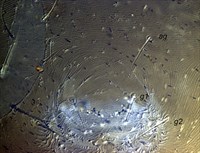
Fig. 2. Oligonychus milleri adult female (non-type; Danville, California) - detail of pattern of pregenital striae.
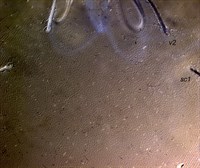
Fig. 3. Oligonychus milleri adult female (non-type; Danville, California) - detail of pattern of striae on prodorsum.
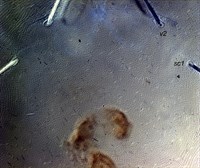
Fig. 4. Oligonychus milleri adult female (non-type; Danville, California) - detail of pattern of striae on prodorsum.
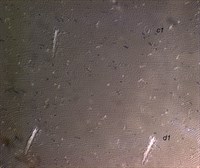
Fig. 5. Oligonychus milleri adult female (non-type; Danville, California) - detail of dorsal setae c1 and d1; and pattern of striae.
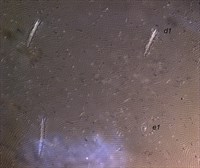
Fig. 6. Oligonychus milleri adult female (non-type; Danville, California) - detail of dorsal setae d1 and e1; and pattern of striae.

Fig. 7. Oligonychus milleri adult female (non-type; Danville, California) - detail of dorsal setae e1 and f1; and pattern of striae.
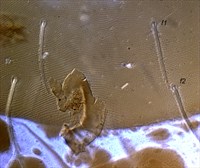
Fig. 8. Oligonychus milleri adult female (non-type; Danville, California) - detail of dorsal setae f1 and f2; and pattern of striae.
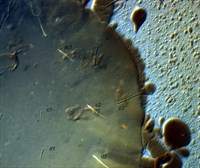
Fig. 9. Oligonychus milleri adult female (non-type; Danville, California) - detail of pattern of striae on prodorsum.
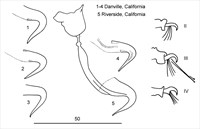
Fig. 10. Oligonychus milleri adult males (non-type) - detail of aedeagus (1-4 specimens from Danville, California; 5. specimen from Riverside, California), and detail of claws II, III, IV (Danville population).

Fig. 11. Oligonychus milleri adult male (non-type; Danville, California) - detail of aedeagus (different focal points - arrow indicates tip; specimen not flat).

Fig. 12. Oligonychus milleri adult male (non-type; Danville, California) - detail of aedeagus (different focal points - arrow indicates tip; specimen not flat).
Material examined
non-types
Taxonomy
Subfamily Tetranychinae
Tribe Tetranychini
Distribution
+Australia, Jamaica, Mexico, *USA
Taxonomy Changes
Paratetranychus milleri McGregor 1950
Oligonychus milleri (McGregor) Pritchard & Baker 1955
Diagnosis
Female
- empodia I-IV = short, stout, strongly curved claw, obviously shorter than proximoventral hairs (Fig. 1)
- lobes on dorsal striae small, slightly taller than wide, widely spaced
- ventral striae without lobes
- pregenital striae transverse between setae ag-ag, then arching from ag to g1; striae transverse on genital flap (Fig. 2)
- prodorsal striae longitudinal with obvious lobes; striae not forming a U-shape pattern posteriorly (as seen in other Oligonychus species) (Figs 3, 4)
- dorsal striae transverse, often with some weak wavy striae (Figs 5-8)
- dorsal central setae c1, d1, e1 short (Figs 5-7), dorsal lateral and posterior setae slightly longer (Figs 7-9)
- peritreme ending in simple bulb, slightly expanded oval
- spinneret of palp small, about as long as wide
- tarsus I with the sockets of one tactile seta and one solenidion proximal to, and one tactile seta overlapping with, the socket of the proximal duplex seta (same as in McGregor 1950, Pritchard & Baker 1955)
- leg chaetotaxy:
- femora 5, 4, 2, 1
- genua 5, 5, 2, 2
- tibiae 7(1), 4, 4, 3
- tarsi 14(3+3), 10(2+3), 7(1+0), 7(1+0)
- eggs with dorsal stipe
Male
- empodia I-IV as in female (Fig. 10)
- peritreme ending in simple bulb
- spinneret of palp tiny
- tarsus I with the sockets of one tactile seta and two solenidia proximal to the socket of the proximal duplex seta (Pritchard & Baker 1955)
- tibiae I-II 11(4+0), 4
- aedeagus ventrally directed, no anterior or posterior projection; dorsal margin of shaft more or less parallel to ventral margin, curving downwards and slightly anteriorly to form acute ventral angle; ventrally directed projection is long (as long as shaft) and evenly tapering to pointed tip (Figs 10-12)
Hosts
>20 recorded host plant species, including 17 species of Pinus spp. (Pinaceae).
Type hosts are listed as *Pinus ponderosa and *P. taeda.
Biology
Oligonychus milleri occurs on several conifers and is widely distributed in the USA. Feeding on young seedlings and young pines by this mite leads to yellowing and bronzing of the needles and can lead to death of the trees.
References
+Gutierrez, J. and Schicha, E. (1985) Notes on the occurrence of Oligonychus milleri (McGregor) and O. coffeae (Nietner) (Acari: Tetranychidae) in Australia. Australian Entomological Magazine 12: 69-70
*McGregor, E.A. (1950) Mites of the family Tetranychidae. American Midland Naturalist 44: 257-420
Migeon, A. and Dorkeld, F. (2006-2017) Spider Mites Web: a comprehensive database for the Tetranychidae. http://www.montpellier.inra.fr/CBGP/spmweb
Pritchard, A.E. and Baker, E.W. (1955) A revision of the spider mite family Tetranychidae. Pacific Coast Entomology Society Memoirs 2: 1-472
Notes
There was a lot of morphological variation in the material identified as Oligonychus milleri held in the US National Museum of Natural History (Smithsonian). I chose to present images and data from material collected 190 km (Danville) from the type locality (Placerville) in California. The original description only offers a lateral drawing of the female, but the material presented here has the same pattern of dorsal setal lengths.
See Notes for O. punicae for a discussion on this species-group.
Copyright © 2018. All rights reserved.